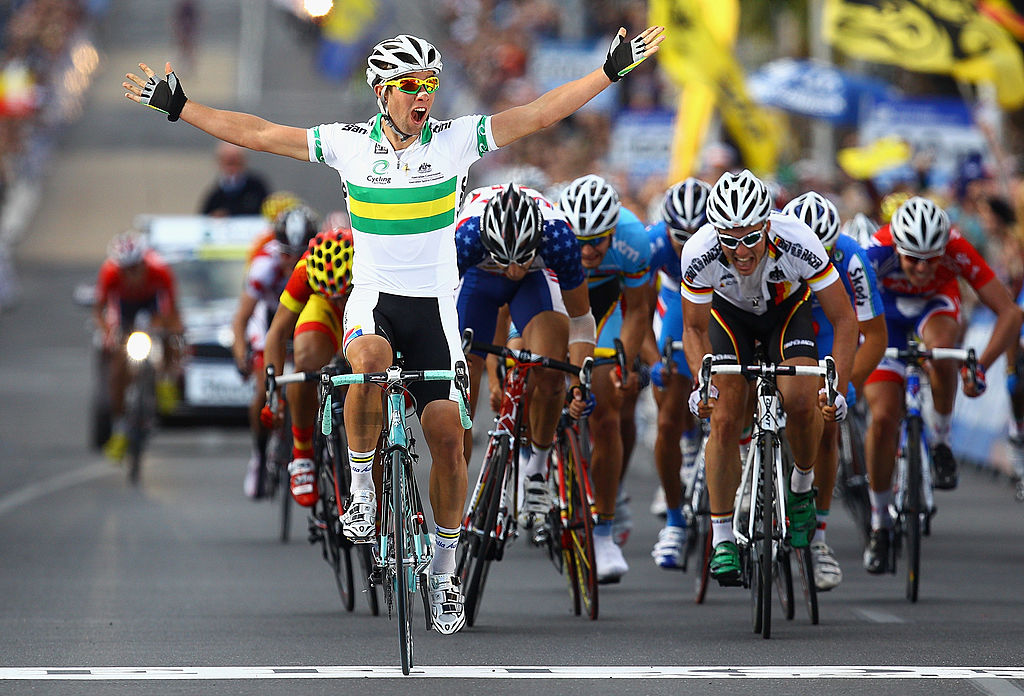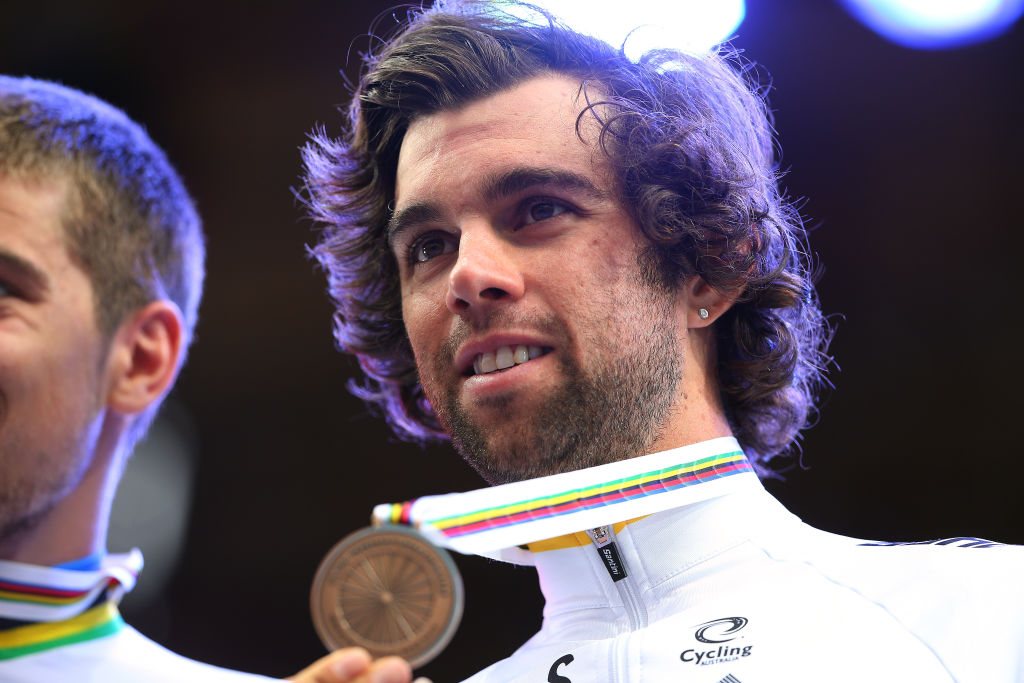Australia expecting anything and everything in Matthews’ bid for rainbows
Experienced road captains primed for technical city circuit

12 years after winning the U23 rainbow jersey on home soil, Michael Matthews is ready to complete a historic home double with the complete backing of the Australian team.
Should the 31-year-old prevail on Sunday's UCI Road World Championships elite men's road race, Matthews would be the first rider ever to complete an U23 and elite double. He would also be the first rider since Alessandro Ballan in 2008 to win an elite title on home soil, and the third since Bernard Hinault in 1980.
A medal on Sunday would also be the first time a home rider has finished on the podium of a World Championships since Alexander Kristoff’s second place in 2017.
Although history therefore suggests home Worlds do not correlate to home medal success, sometimes because of leadership questions, for Sunday it is clear Matthews has the full backing of the team in 2022.
This was symbolised by all eight members of the Australian team talking to the press on Friday afternoon, united behind their leader. Each rider fielded questions and they all reiterated their job is to deliver Matthews into the rainbow stripes.
The experienced triumvirate of Simon Clarke, Luke Durbridge and Heinrich Haussler in particular will have key roles to play on Sunday, charged with protecting Matthews around the course.
“In races like this with no radio, it is key to have a clear plan before we start the race and then basically it’s up to Durbo, Heino and I to make sure that plan’s executed properly. The lack of radios just makes that job even more important,” said Simon Clarke.
Get The Leadout Newsletter
The latest race content, interviews, features, reviews and expert buying guides, direct to your inbox!
“In saying that, I don’t think there is a need to have that much direction on the job because everyone knows the job they are here to do. In any race situation, everyone knows how we need to react.”
Back to basics
Along with his rainbow jersey of 2010, Matthews’ palmares includes silver at Richmond in 2015, bronze at Bergen in 2017, plus fourth in Doha and seventh in Imola.
But it is his U23 triumph rather than his podiums that Matthews thinks of daily as he’s gone back to basics in 2022, replicating his 2010 training plan.
“We went back to Canberra, we did the same preparation at the AIS using a lot of facilities there,” he said of his first return to his hometown since 2017. “Thinking back to that beautiful moment and what we achieved there in Geelong, it was a long time ago now but still, it’s been on my mind almost every day. It’s a major motivation thinking back to that moment and knowing that it is possible to achieve. It is a confidence booster.”
Of the riders listed alongside Matthews as pre-race favourites - Wout van Aert (Belgium), Tadej Pogacar (Slovenia), Remco Evenepoe (Belgium)l or Biniam Girmay(Eritrea) - none of them were on the start line in Geelong. In fact, Evenepoel, Girmay, and Pogacar weren’t even teenagers at the time.
“Obviously there are some very strong bike riders out there. I am not going to lie. I think Wout and Tadej are the key guys trying to make the race. For me, I am just going to be doing my thing to make sure I can get on top. These two guys are going to be very impressive,” Matthews said of his younger rivals.
“We saw Remco in the Vuelta, he was basically superhuman but he showed he was a bit more human in the TT the other day. We’ll do our race, they’ll do theirs and we’ll see what happens in the finish.”
After years of being ‘pigeonholed’ as a sprinter, Matthews went further back to basics in 2020 returning to a style of racing he enjoyed in his youth. This paid dividends in Mende this summer when he won his first Tour de France stage win in five years. A reduced bunch sprint in Wollongong appears the most likely outcome but Matthews is expecting “anything and everything”, including a continuation of his renewed aggressive racing style.
“The race, we don’t know how it is going to turn out. Every race we do this year, the last years, has been unexpected,” he said. “I was speaking to some of our younger guys about how the Worlds normally unfolds, and I said ‘it used to unfold like this’, but it is not going to unfold like this year. Particularly with the course we have, it’s going to be tipped upside down.

No time for sleeping
Of the 266.9km the riders will cover in the race, 205.2km takes place on the technical Wollongong city circuit with no less than 33 turns. A circuit Clarke likens to a kermesse and suggested is the most technical Worlds course in years.
Although Clarke missed the 2010 Worlds when Allan Davis delivered a bronze for Australia, he was a key rider in Cadel Evans’ 2009 triumph in Mendrisio. To date, Australia’s sole gold medal in the elite road race, and like Matthews’, Clarke knows what is required to claim victory.
“It is not really going to be that easy to go to sleep for a couple of hours and wake up with a few laps to go,” he said, predicting instead a “fast course.”. “It is going to be tricky to handle from that point of view. It’s probably the most technical Worlds course I have done in many years just because of the corners.”
Clarke was echoing the comments of teammate Haussler on the demanding nature of the downtown city circuit course.
“You see the one-day races, the classics, the world championships the last few years, the final has already started 100, 110km before the finish. So there is actually no time to relax,” Haussler said.
“On this course, position is key but also saving energy is key. All these micro sprints out corners are zapping away energy lap by lap. We have to be there in numbers in the final because we cannot get into a situation where we have to use two or three riders to bring back a dangerous or important group.”
“We all have to be switched on, it’s not just me calling the shots or putting guys into position. Everyone has to do their job.”
To avoid any sticky situations where Matthews is isolated, the brief is simple for Clarke, “To stay with him you just ride next to him”.
“It is definitely going to strung out a lot more which actually makes it easier to sit together. When the group bunches up you get all mixed up.”
“But in saying that, if you are caught down the back, it is harder to correct that. We’ll be sitting as a tight unit for sure.”